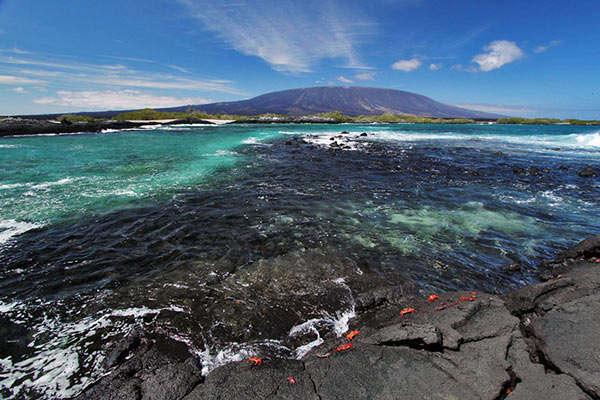Based on their geography, volcanoes take different appearances. We classify them as stratovolcanoes, shield volcanoes, and cinder cones. The 3 popular types of volcanoes are :
- Stratovolcanoes
- Shield volcanoes
- Cinder cones
Let’s dive into the differences between these types of volcanoes.
1. Stratovolcanoes (Composite Cones)
Stratovolcanoes are tall and cone-shaped. Instead of flat shield volcanoes like in Hawaii, they have bigger peaks. They build up by layering lava, ash, and tephra. When ash falls or lava flows, it solidifies and makes a narrower cone. At the peak, stratovolcanoes usually have a small crater. But if you blow the whole thing away, you get a large caldera.
Stratovolcanoes are composed of volcanic rock types that vary from basalt to rhyolite, but their composition is generally andesite. They may erupt many thousands of times over life spans of millions of years. A typical eruption begins with ash explosions and ends with extrusion of thick, viscous lava flows. The alternating layers (strata) of ash and lava are not continuous, blanketlike deposits; rather, they are overlapping lobes or tongues of ash and lava. For this reason many geologists refer to stratovolcanoes as composite volcanoes.
Examples of stratovolcanoes include :
Mount Fuji is a dormant stratovolcano that last erupted in the early 1700s.
Mount Toba in Sumatra is 100 kilometers long and 30 kilometers wide is a caldera.
2. Shield Volcanoes
Shield volcanoes earned their name because they’re shaped like a shield. Hawaiian volcanoes are quintessential shield volcanoes. If you go to Hawaii, they are broad and flat. These volcanoes can be hundreds of kilometers wide. Shield volcanoes tend to erupt fluid basalt lava. Violent explosions are possible. But they’re not as common for shield volcanoes. Because basalt has a low viscosity (more watery), it can flow on the surface better. When these types of volcanoes erupt, lava flows out large distances.
A shield volcano is a type of volcano usually built almost entirely of fluid lava flows. They have very gentle slopes and are very developed horizontally. They almost never have violent eruptions, with basic lava simply flowing out. Although the term is generally ascribed to basaltic shields it has at times been appended to rarer scutiform volcanoes of differing magmatic composition.
Examples of shield volcanoes include :
Mauna Loa in Hawaii is the world’s largest active shield volcano. From base below sea level to its summit, it’s also the tallest mountain in the world.
Fernandina Island is an active shield volcano in the Galapagos Islands.
3. Cinder Cones
Cinder cones (scoria cones) are small in comparison to the other types of volcanoes. In fact, they’re only tens of hundreds of meters in size. But at the same time, they’re very steep typically with a bowl-shaped crater at the summit. Cinder cones form out of tephra, magma, and ash that it ejects. When cinder cones spew out lava, it splits it up in the air and splatters. Eventually, it cools down and becomes part of its steep cone-like feature.
A cinder cone volcano is simply a steep conical hill of tephra (volcanic debris) that accumulates around and downwind from a volcanic vent. The cinder cones are made from pyroclastic material, which is pretty loose. Cinder cones are commonly found on the flanks of shield volcanoes and stratovolcanoes.
Examples of cinder cones include :
Cerro Negro is an active cinder cone in Nicaragua. It’s the youngest in Central America first appearing in 1850.
Paricutin volcano in Mexico is a cinder cone that suddenly erupted in a corn field. The eruption left a 420 meter tall cone without erupting ever again.














No comments:
Post a Comment